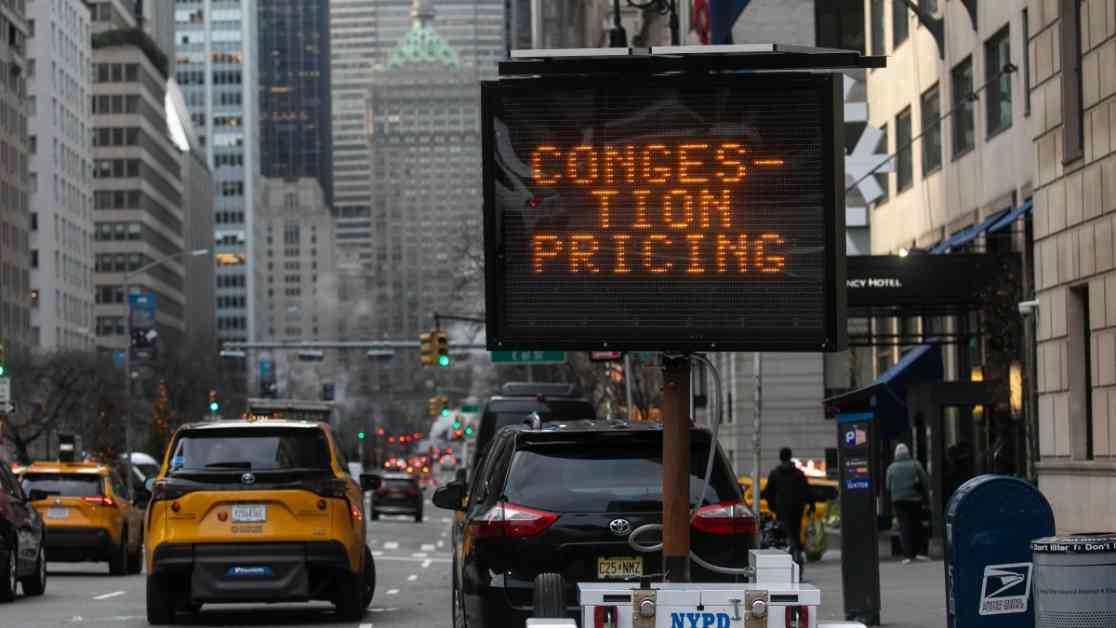The U.S. Department of Transportation made waves this week by announcing the withdrawal of its support for New York City’s congestion pricing plan. This decision has sent shockwaves through the city, impacting multiple infrastructure projects that were set to receive funding from this initiative.
In a surprising turn of events, Secretary Sean Duffy released a letter to Governor Kathy Hochul, indicating the department’s intention to terminate approval for the congestion pricing program. This move comes after the department initially granted authorization for the program on November 21 under the Biden administration.
While the news of the termination of congestion pricing has sparked mixed reactions among elected officials in New York and New Jersey, a spokesperson from the governor’s office emphasized that any assumptions about the program’s demise are premature. The uncertainty surrounding the fate of congestion pricing has left many wondering about the implications for ongoing and future infrastructure projects in the city.
Can the DOT Unilaterally Terminate Congestion Pricing?
The Department of Transportation’s letter highlights its decision to withdraw support for the tolling plan, but it does not specify a timeline for the termination of the pilot program. It is essential to note that while the department provided authorization for congestion pricing, the operation of the program falls under the purview of the Metropolitan Transportation Authority (MTA).
Amidst this uncertainty, MTA Chair and CEO Janno Lieber expressed the agency’s commitment to preserving the congestion pricing plan by filing a lawsuit in federal court. Lieber’s statement underscores the agency’s dedication to upholding the program, which has undergone extensive federal environmental review processes over the past four years.
The lawsuit filed by the MTA challenges the Trump administration’s efforts to dismantle congestion pricing, labeling such actions as “unlawful.” This legal battle underscores the significance of congestion pricing as an established program and raises questions about the potential ramifications of its abrupt termination.
Impacts of Ending Congestion Pricing on Infrastructure Projects
The potential cessation of congestion pricing could have far-reaching effects on critical infrastructure projects across New York City. One such project that could be at risk is the purchase of 265 electric buses, which were heralded as the first initiative supported by congestion pricing. These buses, acquired in the program’s early days, were slated for deployment throughout the city later this year.
Another major project that may face jeopardy is the second phase of the Second Avenue subway extension. Prior to the implementation of congestion pricing, the MTA sought proposals from companies to design and build an extension of the Q line between 96th and 125th streets. The uncertainty surrounding the future of congestion pricing could significantly impact the progress of this expansion project.
Additionally, the pause in congestion pricing could disrupt essential projects aimed at improving accessibility and efficiency within the city’s subway system. Proposals to add elevators and ramps to at least 18 subway stations, as well as upgrade signals for C & F lines in Brooklyn and Manhattan, could face delays or modifications due to the funding limitations arising from congestion pricing’s potential termination.
In his letter, Secretary Duffy acknowledges the financial implications of ending congestion pricing on the transit agency. While the decision may pose challenges for the MTA’s funding streams, it underscores the need for sustainable solutions to support critical infrastructure projects in the city.
The fate of congestion pricing hangs in the balance, leaving city officials, transit agencies, and residents on edge as they await further developments on this contentious issue. The potential ripple effects of the program’s termination highlight the interconnected nature of infrastructure planning and funding, underscoring the importance of long-term sustainability and strategic investments in urban transportation systems.












